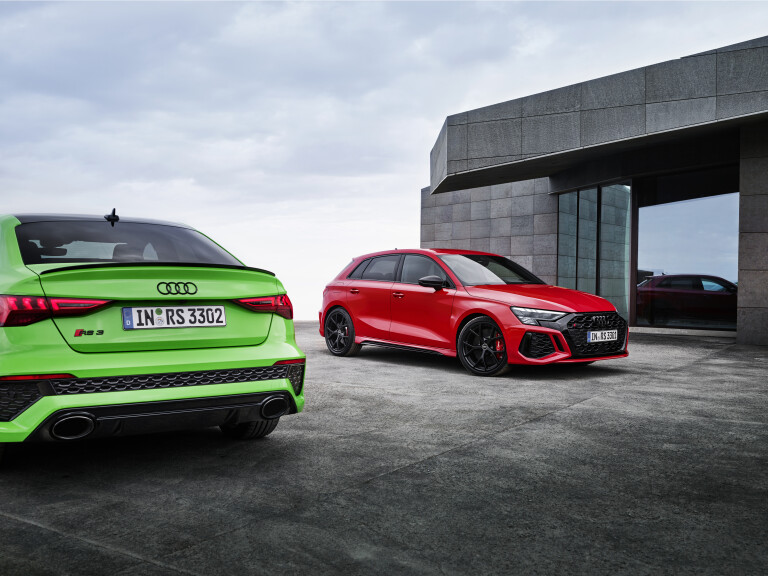
New Audi RS3
- Same power, more torque
- 0-100km/h in 3.8 seconds, claimed top speed of 290km/h
- Possible six-figure car by the time it launches locally before on-road costs
The curtain has dropped on the newest-generation of the Audi RS3.
Audi Sport’s smallest RS-badged offering packs its biggest punch yet, bringing a host of added tech, focused dynamics and evolved styling to the popular and versatile RS3 sedan and hatchback.
The familiar 2.5-litre turbocharged five-cylinder engine is housed under the bonnet, retaining the same 294kW output (arriving 250rpm sooner, at 5600rpm), bolstered by an improved 500Nm (between 2250rpm and 5600rpm).
UPDATE, August 5, 2022: New RS3 driven in Australia
The new-generation RS3 is finally in Australia. You can read our review here, and watch Inwood's track and road drive in the video below.
The story to here
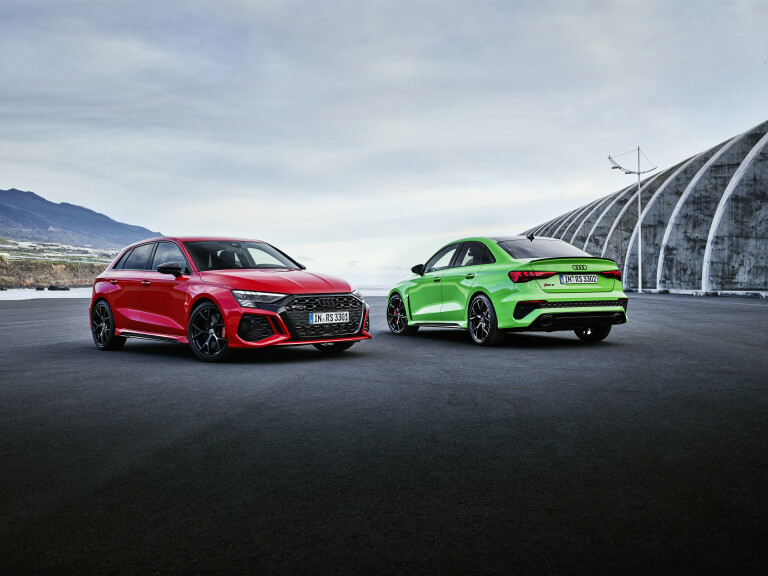
Revised gearing within the seven-speed dual-clutch transmission drops the 0-100km/h time to a claimed 3.8-seconds, with top speed limited to 250km/h in base configuration, or 280km/h as an optional upgrade.
The optional RS Dynamic package, combined with an optional ceramic brake package, further lifts the top speed to a class-leading 290km/h.
The signature five-cylinder soundtrack benefits from a new exhaust system, now featuring fully-variable valves which change in character depending on drive modes – with an optional RS sports exhaust system promising an even more vocal bark.
Arguably the biggest development befitting the new RS3 is the Audi Sport debut of the RS torque splitter; an electronically-controlled rear differential with multiplate-clutches housed on each independent driveshaft.
The new RS torque splitter is able to independently allocate engine torque drive between left or right wheels, in most cases, to minimise under- and oversteer and maximise grip under rapid direction changes and lateral load.
The new torque splitter rear axle also allows for up to 100 per cent of engine drive to be directed to a single rear wheel, with a new ‘RS torque rear’ drive mode debuting as a track-only functional drift mode, for all intents and purposes.
RS performance mode, is the second of two new drive options added to the RS3’s existing comfort, auto, dynamic, individual and efficiency choices.
These features leverage the RS3’s array of vehicle and drivetrain settings into a focused tuning map specifically tailored to the its new factory-option Pirelli P Zero Trofeo R semi-slick tyres; specifically dedicated to setting the fastest lap times possible.
Standard RS Sports suspension gains revised shock absorbers and valving, while optional adaptive dampers bear three distinct tuning curves for comfort, balanced and sport situations.
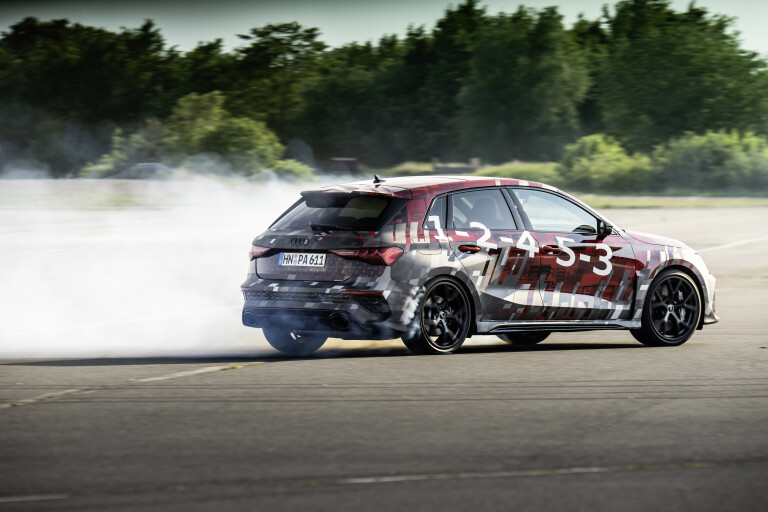
Modified pivot bearings and stiffer bearings, bushings and stabiliser bars yield increased negative camber (almost one degree further at the front, and half a degree further at the rear), aiding turn-in and mid-corner purchase.
The new modular Vehicle Dynamics Controller (mVDC) acts as the ‘brains’ of the car, capturing and synchronising data from all vehicle systems including the torque splitter, wheel-selective torque control, steering and adaptive dampers (if fitted) with millisecond precision.
New, larger, six-piston steel brakes come fitted in the new RS3 as standard, measuring 375mm at the front and 310mm at the rear. A pair of carbon-ceramic front brakes are available as an optional extra, once again, measuring 380mm in diameter.
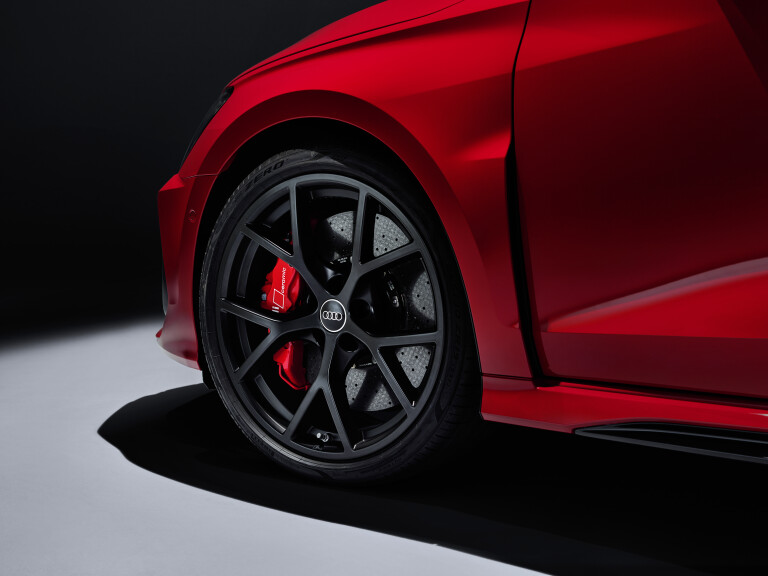
While many of the RS3’s most significant developments appear under the skin, it too debuts a bold new look which mimics the design language prevalent throughout the rest of the RennSport range.
New Y-spoke wheels are housed under heavily blistered fenders, behind which the front track has been increased by 33mm for both body styles, while the hatchback’s rear track also benefits from a 10mm extension.
The front apron is hallmarked by RennSport’s signature hexagonal honeycomb grille, and LED headlights as standard. Matrix headlights will be available as an option, unmistakably distinguished by its RS3 lettering animations.
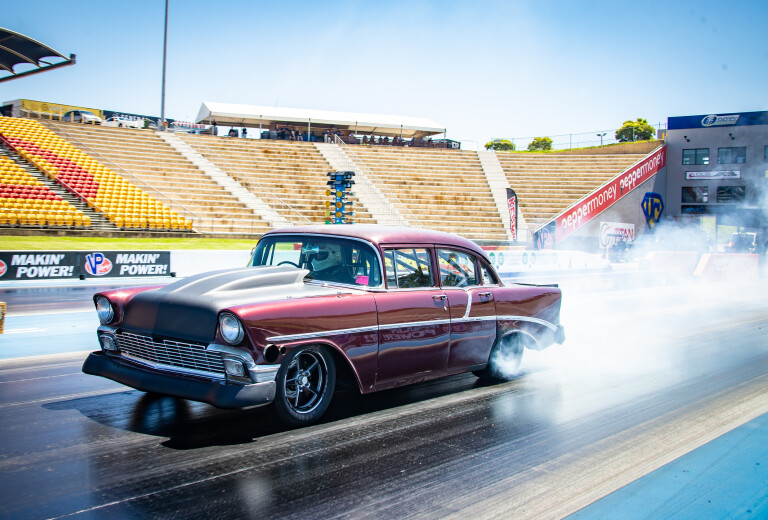
The RS3’s flanks now house a new (non-functional) air outlet behind the front wheel, with flared rocker panels tying into the redesigned rear bumper, housing a full-width grille, integrated diffuser and signature oval tailpipes.
Inside, the RS3 debuts a new 12.3-inch Virtual Cockpit Plus instrument cluster bearing a number of new jet-like graphics, and supplemented by a 10.1-inch central screen, and – finally – a head-up display.
A further RS Design Package adds either red or green accents throughout the cabin, and to the 12 o’clock mark of the new flat-bottomed steering wheel.
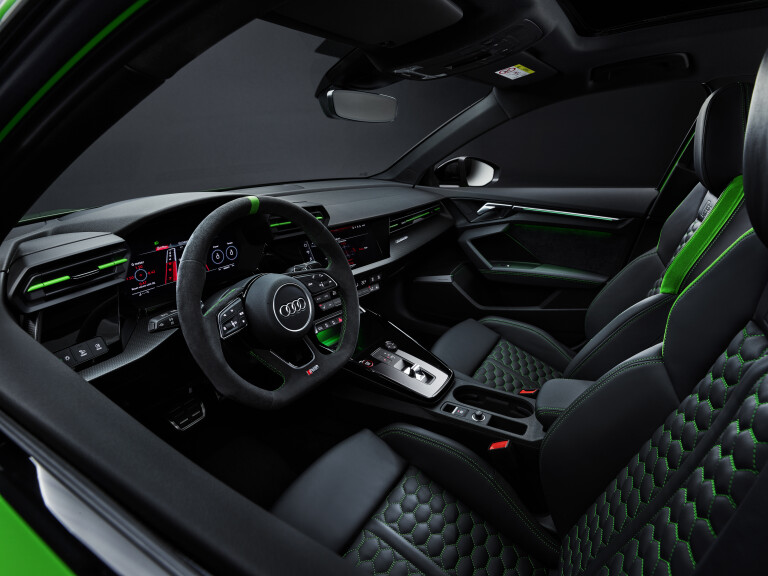
When will the 2022 Audi RS3 come to Australia?
Local arrival and pricing have yet to be announced, however Audi says its European order books will be opening from mid-August 2021.
Prices in Europe will begin at €60,000 (AU$95,940) for the RS3 Sportback, and €62,000 (AU$99,138) for the RS3 Sedan.
That's a significant price increase, and could see on-road prices blow out beyond six-figures by the time the RS3 launches Down Under.
We can expect an Australian launch in 2022 and will update this story as local details come to light. Stay tuned.



COMMENTS